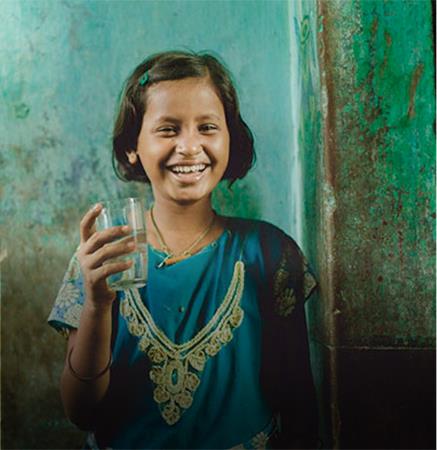Government Schools
Primary
No. of Primary Schools : 11,466
No. of Students in Schools: 4,316,000
No. of Teachers in Schools: 107,244
Secondary
No. of Secondary Schools: 491
No. of Stds form I – form VI: 152,025
Teachers in Sec Schools: 8,198
Colleges
Teacher Training College: 35
No. of Tutors in Teachers College: 978
No. of Students in Teachers College: 8770
Technical Colleges: 3
No. of Teachers in Tech. College: 198
No. of Students in Tech. College: 2123
- Primary enrolment: 66% total (male 67%, female 66%).
- Secondary enrolment: male 6%, female 5%.
- Primary school teacher ratio: 37:1
- Street Children: 92% are aged 9 – 15yrs. About half completed primary edu. & majority live with parents/relatives & come from poor families.
- Completed Primary Education: 80%
- Continued Secondary Education: Only 20% get to continue out of 80% who complete.
Reason for not attending Primary School + Failure:
- In some rural areas schools are far.
- Children have to help in domestic chores.
- Poverty.
- Parents cannot afford (Though primary edu. is free, money for books, uniforms is not available)
- Orphaned children (i.e. Some have to work and help single parents or take care of siblings)
- Abuse (some abused by parents & some orphans abused by relatives whom they live with)
- Traditional practices bias against girls’ education.
- Cannot complete homework due to domestic tasks., hence failing and some drop out.
- Learning environment.
- Malnourished child, sick & lacking in cognition & emotional support is likely to fail in education. Attainment, through lack of concentration, poor attendance, dropout & failure to catch up on lessons.
- Inefficient teachers: 56% of primary school teachers are leavers or secondary failures. 0.6% are diploma holders. The rest are form IV leavers. Therefore students are obviously not going to get quality education, ending up with children failing their in their exams.
Reason for not continuing Secondary Education:
- Lack of fund.
- Insufficient secondary schools.
- Quality of Education: Public school teachers are not fully committed to their job due to being underpaid, they look for other means of income, not attending classes for several days and thus the children left unsupervised, which surely lead the pupils to fail their exams. Therefore the 20% who go to secondary are mostly from private schools.
- Over crowded classes.
- Limited space & resources in schools. (i.e. No desks, chairs, teachers, blackboards etc.)
- Child labor (This is mostly in females, as they have lot of domestic chores, .’. they can’t manage both work & study)
- Poor families cannot afford fees.
- Travel distances: In rural areas almost ¼ household live 20kms from Secondary School.
- Traditional practices bias against girls’ education.
Why are children in the streets?
- Education is the basic right & yet 47% of children in sub-Saharan Africa do not attend school. Many children come to streets thinking they will be able to obtain schooling.
- Children & adults in rural areas believe that a better life is easily available in urban areas. (.’. they go to urban areas seeking better life, but ending up in the streets).
- People do not intervene in cases of child or domestic abuse. Many feel that they do not have the skills to do so. There is low awareness of the consequences of child abuse.
- Traditionally children have been viewed as the subservient property of adults. As children are increasingly exposed to ‘modern’ values they demand a greater role in decisions affecting them & the most adventurous often run to the streets to taste ‘freedom’.
- Orphaned children often end up on streets.
- Fees not available to continue with education thus ending up on streets.
- Poor families with children who are at risk of coming to the streets. 30-40% of families (the % is a study of just a few areas, not whole of TZ) are at risk of having a child run away due to poverty, family breakdown and the lure of urban life.
What happens to street children?
- Children on the streets are vulnerable to extreme violations of their rights.
- They struggle to access food, health, clothes & security.
- They live on the edge of society.
- They are physically, verbally & sexually abused.
- Few trust adults.
- They have limited skills & find it difficult to earn money legally.
- Many work as child labourers, involved in prostitution & domestic work.
- Many become criminals, addicted to drugs & alcohol.
- They mutilate themselves & abuse others.
- They become socially dysfunctional by being trapped in poverty cycle & part of an underclass that fuels crime & other illegal activities.
(The above School data is of year 2000 & taken from www.tanzania.go.tz)
The above data is referenced from the following websites:
- www.tanzania.go.tz
- www.unicef.org
- http://www.unfpa.org/focus/tanzania/background.htm
- http://gbgm-umc.org/country_profiles/country_statistics.cfm?Id=162
- http://reference.allrefer.com/world/countries/tanzania/people.html
- http://www.ministrytochildren.org/ArticleBBCNews.html
- http://www.hartford-hwp.com/archives/36/380.html
- http://www.mkombozi.org/whatwedo.htm
- http://ipp.co.tz/ipp/guardian/2003/12/08/1968.html


